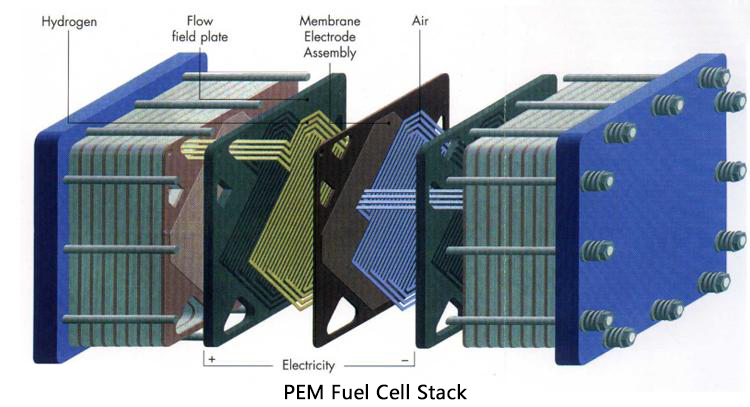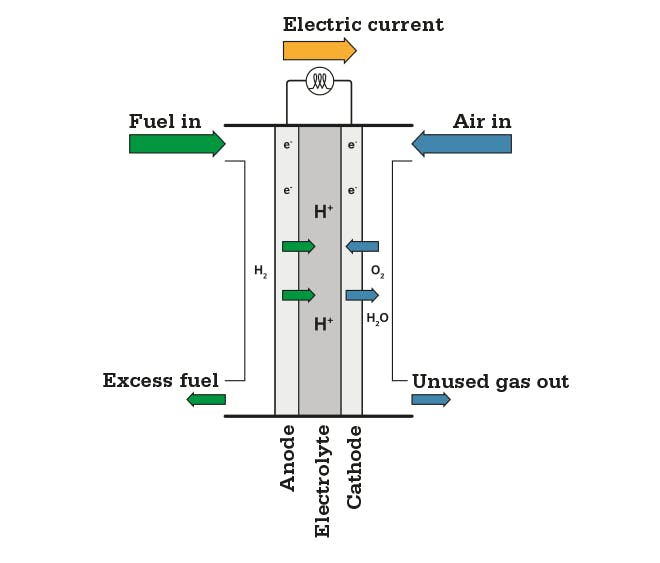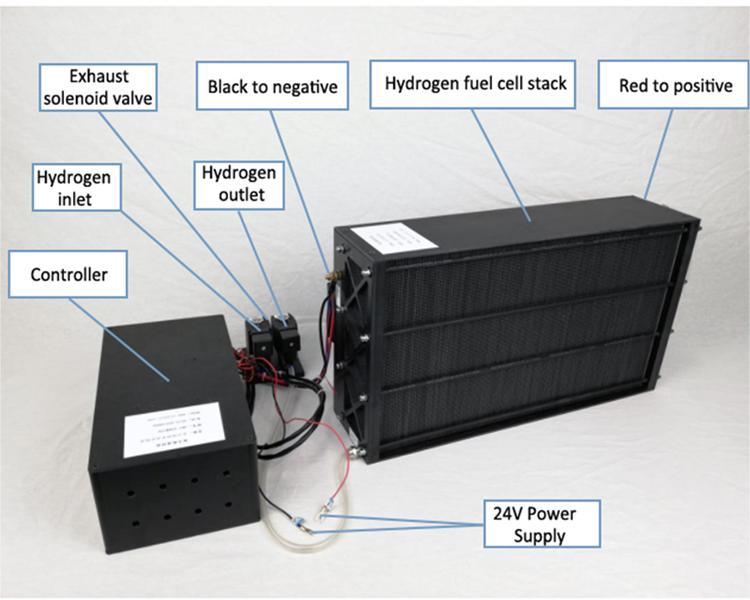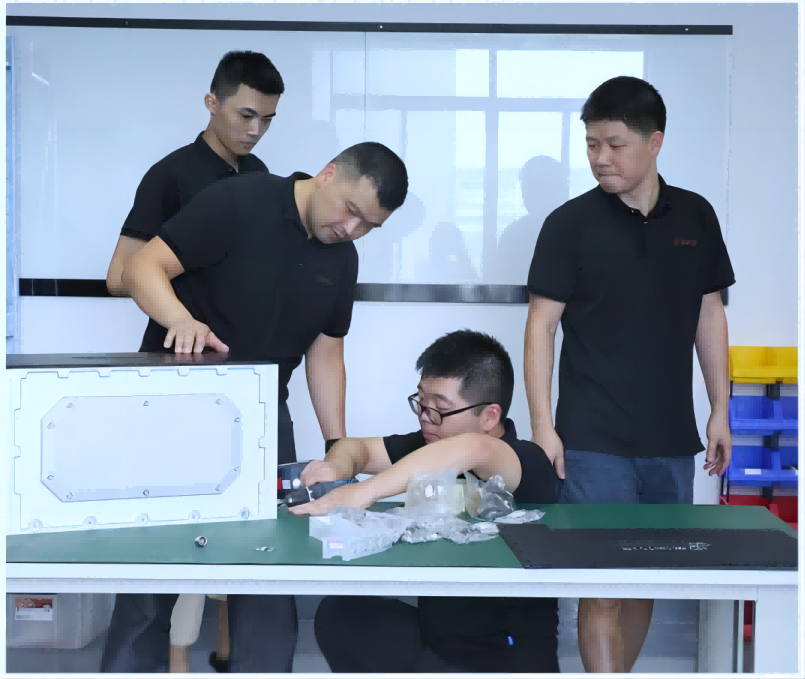TEL&Wechat&Whatsapp:+86 18069220752
Hydrogen fuel cell
A fuel cell uses the chemical energy of hydrogen or other fuels to cleanly and efficiently produce electricity. If hydrogen is the fuel, the only products are electricity, water, and heat. Fuel cells are unique in terms of the variety of their potential applications; they can use a wide range of fuels and feedstocks and can provide power for systems as large as a utility power station and as small as a laptop computer.
Why choose Hydrogen fuel cells
Fuel cells can be used in a wide range of applications, providing power for applications across multiple sectors, including transportation, industrial/commercial/residential buildings, and long-term energy storage for the grid in reversible systems.
Fuel cells have several benefits over conventional combustion-based technologies currently used in many power plants and vehicles. Fuel cells can operate at higher efficiencies than combustion engines and can convert the chemical energy in the fuel directly to electrical energy with efficiencies capable of exceeding 60%. Fuel cells have lower or zero emissions compared to combustion engines. Hydrogen fuel cells emit only water, addressing critical climate challenges as there are no carbon dioxide emissions. There also are no air pollutants that create smog and cause health problems at the point of operation. Fuel cells are quiet during operation as they have few moving parts.
How Fuel Cells Work

Fuel cells work like batteries, but they do not run down or need recharging. They produce electricity and heat as long as fuel is supplied. A fuel cell consists of two electrodes—a negative electrode (or anode) and a positive electrode (or cathode)—sandwiched around an electrolyte. A fuel, such as hydrogen, is fed to the anode, and air is fed to the cathode. In a hydrogen fuel cell, a catalyst at the anode separates hydrogen molecules into protons and electrons, which take different paths to the cathode. The electrons go through an external circuit, creating a flow of electricity. The protons migrate through the electrolyte to the cathode, where they unite with oxygen and the electrons to produce water and heat. Polymer electrolyte membrane (PEM) fuel cells are the current focus of research for fuel cell vehicle applications.
PEM fuel cells are made from several layers of different materials. The main parts of a PEM fuel cell are described below.The heart of a PEM fuel cell is the membrane electrode assembly (MEA), which includes the membrane, the catalyst layers, and gas diffusion layers (GDLs).Hardware components used to incorporate an MEA into a fuel cell include gaskets, which provide a seal around the MEA to prevent leakage of gases, and bipolar plates, which are used to assemble individual PEM fuel cells into a fuel cell stack and provide channels for the gaseous fuel and air.


Dr.Hauss
Semiconductor material Technology Engineer and Sales manager
contact: sales001@china-vet.com
The fuel cell system

A fuel cell stack will not operate stand-alone, but needs to be integrated into a fuel cell system. In the fuel cell system different auxiliary components such as compressors, pumps, sensors, valves, electrical components and control unit provide the fuel cell stack with a necessary supply of hydrogen, air and coolant. The control unit enables safe and reliable operation of the complete fuel cell system. Operation of the fuel cell system in the targeted application will require additional peripheral components i.e. power electronics, inverters, batteries, fuel tanks, radiators, ventilation and cabinet.
The fuel cell stack is the heart of a fuel cell power system. It generates electricity in the form of direct current (DC) from electrochemical reactions that take place in the fuel cell. A single fuel cell produces less than 1 V, which is insufficient for most applications. Therefore, individual fuel cells are typically combined in series into a fuel cell stack. A typical fuel cell stack may consist of hundreds of fuel cells. The amount of power produced by a fuel cell depends upon several factors, such as fuel cell type, cell size, the temperature at which it operates, and the pressure of the gases supplied to the cell. Learn more about the parts of a fuel cell.
Graphite electrode plate and MEA

| Processing length of single plate | Processing width of single plate | Processing thickness of single plate | Minimum thickness for processing single plate | Recommended operating temperature |
| customized | customized | 0.6-20mm | 0.2mm | ≤180℃ |
| Density | Shorehardness | Shorehardness | FlexuralStrength | Electricalresistivity |
| >1.9g/cm3 | >1.9g/cm3 | >100MPa | >50MPa | <12µΩm |
| Impregnationprocess1 | Impregnationprocess2 | Impregnationprocess3 |
| The minimum thickness for processing single plate is 0.2mm.1KG/KPA without leakage | The minimum thickness for processing single plate is 0.3mm.2KG/KPA without leakage | The minimum thickness for processing single plate is 0.1mm.1KG/KPA without leakage |

Prof. yeah
For work inquiries: yeah@china-vet.com
86-189 1159 6392

Ningbo VET Energy Technology Co., Ltd (Miami Advanced Material Technology Co., LTD)is the energy department of VET Group, which is a national high-tech enterprise specializing in the research and development, production, sales and service of fuel cell parts, such as hydrogen fuel cellstack, hydrogen generator, membrane electrode assembly, bipolar plate, PEM electrolyzer, fuel cell system, catalyst, BOP part, carbon paper andother accessories.
Over the years, passed ISO 9001:2015 international quality management system,we have gathered a group of experienced and innovative industry talents and R & D teams, and have rich practical experience in product design and engineering applications.
One of the main components of hydrogen fuel cell is graphite fuel electrode plates. In 2015,VET entered the fuel cell industry with its advantages of producing graphite fuel electrode plates.Founded company Miami Advanced Material Technology Co., LTD.
After years of research and development, vet have mature technology for producing 10w-6000w Hydrogen fuel cells. Over 10000w fuel cells powered by vehicle are being developed to contribute to the cause of energy conservation and environmental protection.As for the biggest energy storage problem of new energy, we put forward the idea that PEM converts electric energy into hydrogen for storage and hydrogen fuel cell generates electricity with hydrogen. It can be connected with photovoltaic power generation and hydropower generation.
Quick Service
For before-order tage,our professional sales team could respond your inquiry within 50-100 minutes during working hours and within 12 hours during close time. Quick and professional reply will help you win your client with perfect option at high efficiency.
For order-running stage, our professional service team will take pictures every 3 to 5 days for your 1st hand information update of the production and provide documents within 36 hours to update shipping progress. We pay high attention to after-sale service.
For after-sale stage, our service team always keep close contact with you and always stand by at your service. Our professional after sale service even include fly our engineers to help you solving problems on site. Our warranty is 12 months after delivery.
Client Love!
Lorem ipsum dolor sit amet, consectetur adipiscing elit. Ut a dui eros. Suspendisse iaculis, dui in luctus luctus, turpis ipsum blandit est, sed fermentum arcu sem quis purus.
~ Justin Busa
Lorem ipsum dolor sit amet, consectetur adipiscing elit. Ut a dui eros. Suspendisse iaculis, dui in luctus luctus, turpis ipsum blandit est, sed fermentum arcu sem quis purus.
~ Billy Young
Lorem ipsum dolor sit amet, consectetur adipiscing elit. Ut a dui eros. Suspendisse iaculis, dui in luctus luctus, turpis ipsum blandit est, sed fermentum arcu sem quis purus.
~ Robby McCullough
FAQs
Yes, we require all international orders to have an ongoing minimum order quantity.
Yes, we can provide most documentation including Certificates of Analysis / Conformance; Insurance; Origin, and other export documents where required.
For samples, the lead time is about 7 days. For mass production, the lead time is 15-25 days after receiving the deposit payment. The lead times become effective when we have received your deposit, and we have your final approval for your products. In all cases we will try to accommodate your needs. In most cases we are able to do so.
You can make the payment to our bank account, Western Union or PayPal:
30% deposit in advance, 70% balance before shipment or against the copy of B/L.
We warranty our materials and workmanship. Our commitment is to your satisfaction with our products. In warranty or not, it is the culture of our company to address and resolve all customer issues to everyone’s satisfaction
Yes, we always use high quality export packaging. We also use specialized hazard packing for dangerous goods and validated cold storage shippers for temperature sensitive items. Specialist packaging and non-standard packing requirements may incur an additional charge.
The shipping cost depends on the way you choose to get the goods. Express is normally the most quickest but also most expensive way. By seafreight is the best solution for big amounts. Exactly freight rates we can only give you if we know the details of amount, weight and way. Please contact us for further information.





